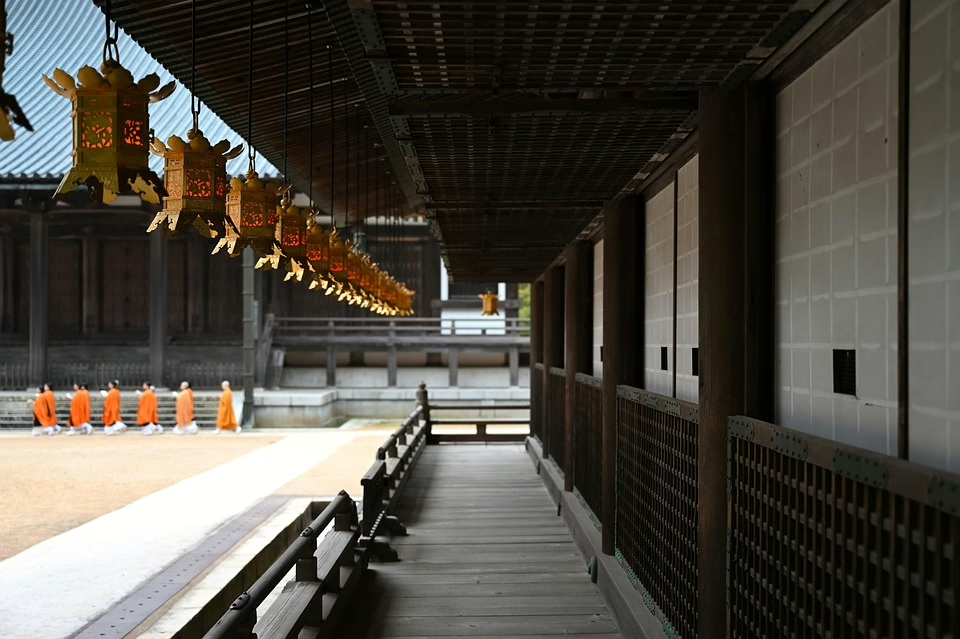Lost Kingdoms: Exploring Ancient Civilizations That Disappeared
Introduction
Throughout human history, civilizations have risen and fallen, leaving behind remnants of their existence. The allure of these lost kingdoms captivates historians, archaeologists, and adventurers alike. From the bustling streets of ancient cities to the monumental architecture that tells tales of once-thriving cultures, exploring these forgotten realms provides insights into human resilience, creativity, and collapse. This article seeks to delve into the fascinating stories of ancient civilizations that vanished, what led to their disappearance, and what we can learn from their legacies.
The Importance of Studying Lost Civilizations
Studying lost civilizations is not merely an academic exercise; it serves several significant purposes:
-
Cultural Understanding: Exploring the achievements and failures of past societies helps us understand cultural evolution and the interconnected nature of human history.
-
Lessons in Society: By examining the reasons behind the decline of ancient civilizations, we can draw parallels to contemporary society and potentially avoid repeating historical mistakes.
-
Historical Context: Lost civilizations often contribute to our understanding of the development of important concepts like governance, trade, and social organization.
-
Inspiration for Modern Society: Many principles of governance, philosophy, art, and architecture from these cultures can inspire modern societies in various ways.
Defining a “Lost Civilization”
Before diving deeper, it is essential to define what constitutes a “lost civilization.” Generally, a lost civilization refers to a culture or society that has largely disappeared, often leaving behind enigmatic ruins and artifacts. These can include:
- Societies that underwent complete collapse due to various factors.
- Civilizations that were absorbed or conquered by neighboring states, often erasing their cultural identity.
- Cultures that mysteriously vanished, leaving historians and archaeologists puzzled about their fate.
Ancient Egypt: The Enigma of the Pharaohs
The Rise of Ancient Egypt
Ancient Egypt, renowned for its monumental architecture and rich history, provides a compelling case study of a civilization that thrived for thousands of years before gradually fading due to external invasions, economic decline, and environmental challenges.
Achievements
The Egyptians are known for several remarkable achievements, including:
-
Pyramids and Temples: The construction of the Great Pyramid of Giza serves as a testimony to their architectural prowess and understanding of mathematics.
-
Hieroglyphics: Their writing system is one of the oldest and provides considerable insight into their culture, beliefs, and daily life.
-
Art and Religion: Egyptian art is characterized by its distinct style and religious significance, which played a crucial role in daily life.
The Decline of Ancient Egypt
Despite its glory, Ancient Egypt’s decline started around the 1st millennium BCE. Factors contributing to the decline include:
-
External Invasions: The invasion by the Assyrians and later by the Persians weakened their control and influence.
-
Economic Strain: Agricultural overextension and resource depletion led to economic instability.
-
Cultural Integration: The assimilation of different cultures, particularly under the influence of the Greeks, began to dilute the distinct Egyptian identity.
Legacy
Ancient Egypt’s legacy remains profound, influencing art, architecture, and religious practices worldwide. The advent of Egyptology further spurred interest, leading to renewed excavations and studies that continue to unveil its mysteries.
The Maya Civilization: A World of Wonders
The Rise of the Maya
The Maya civilization emerged in Mesoamerica around 2000 BCE, known for its sophisticated culture, hieroglyphics, and profound understanding of astronomy and mathematics. The civilization reached its peak between 250 and 900 CE.
Achievements
The Maya excelled in several domains:
-
Architecture: Iconic structures like the pyramids at Tikal and Chichen Itza showcase their impressive architectural skills.
-
Astronomy and Calendar Systems: The Maya developed complex calendar systems based on their intensive study of celestial bodies.
-
Art and Literature: Their art, characterized by vibrant murals and intricate pottery, tells stories of their gods and daily life.
The Decline of the Maya
The decline of the Maya civilization is complex and multifaceted:
-
Environmental Factors: Deforestation and soil degradation due to agricultural practices contributed to food shortages.
-
Warfare: Increased conflict between city-states weakened their political structures.
-
Natural Disasters: Drought affected agricultural productivity, leading to famine and societal unrest.
Legacy
Despite the collapse of many city-states, the Maya civilization’s descendants continue to thrive, preserving many cultural traditions and languages. The exploration of their ruins continues to uncover insights about their advanced society.
The Indus Valley Civilization: An Urban Mystery
Rise of the Indus Valley Civilization
Flourishing between 2500 and 1900 BCE, the Indus Valley Civilization was among the world’s earliest urban cultures, located in present-day Pakistan and northwest India.
Achievements
This civilization demonstrated remarkable advancements:
-
Urban Planning: Cities like Mohenjo-Daro and Harappa featured advanced drainage systems, grid layouts, and public baths.
-
Trade Systems: Evidence suggests extensive trade networks reaching as far as Mesopotamia.
-
Craftsmanship: The civilization is known for its crafted goods, including pottery, jewelry, and seals.
The Decline of the Indus Valley Civilization
The reasons for the decline of the Indus Valley Civilization are still debated, but several contributing factors are documented:
-
Climate Change: Shifts in monsoon patterns may have disrupted agriculture and water supplies.
-
Geological Events: Evidence suggests that tectonic shifts may have altered river courses, impacting settlements.
-
Invasion Theories: Some propose external invasions contributed to urban decline, although there is limited archaeological evidence to support this.
Legacy
The Indus Valley Civilization has significantly shaped our understanding of early urban societies, influencing future cultures in the region.
Ancient Mesopotamia: The Cradle of Civilization
Historical Overview
Ancient Mesopotamia, located between the Tigris and Euphrates rivers, is often referred to as the “Cradle of Civilization.” It saw the rise of several successive cultures, including the Sumerians, Akkadians, Babylonians, and Assyrians.
Achievements
Mesopotamia’s contributions to human civilization are immense:
-
Writing Systems: The cuneiform script is one of the earliest forms of writing.
-
Legal Codes: Hammurabi’s Code represents one of the first known sets of laws governing society.
-
Mathematics and Astronomy: The Sumerians developed a base-60 numerical system, still evident in our time measures today.
The Decline of Mesopotamian Civilizations
The decline of Mesopotamian kingdoms occurred gradually but can be traced to several robust factors:
-
Continuous Warfare: Internal strife and external invasions by neighboring empires weakened centralized authority.
-
Environmental Challenges: Flooding and shifting river courses led to agricultural decline.
-
Cultural Assimilation: The rise of new powers, such as the Persians, absorbed Mesopotamian culture, leading to its transformation.
Legacy
The legacy of Mesopotamia is profound in the context of governance, law, and urban development, greatly influencing subsequent societies.
The Roman Empire: The Fall of a Giant
The Rise of the Roman Empire
Beginning as a small city-state, Rome expanded to become one of the largest empires in history. Its influence extended throughout Europe, North Africa, and parts of the Middle East.
Achievements
The achievements of Rome are remarkable:
-
Engineering Marvels: Roman aqueducts, roads, and architecture, including the Colosseum, showcase advanced engineering.
-
Legal System: The development of Roman law laid foundational principles that still influence modern legal systems.
-
Cultural Integration: Rome absorbed and adapted various cultures, leading to a rich tapestry of art, philosophy, and governance.
The Decline of the Roman Empire
The decline of the Roman Empire was a complex process, influenced by various factors:
-
Political Corruption: Internal political instability and power struggles weakened central authority.
-
Economic Decline: Heavy taxation and reliance on slave labor hampered economic progression.
-
Barbarian Invasions: Increased pressure from external tribes ultimately led to the empire’s disintegration.
Legacy
The Roman Empire’s influence endures in modern languages, legal structures, and cultural practices.
The Khmer Empire: Temples and Trade
Rise of the Khmer Empire
The Khmer Empire, centered in present-day Cambodia, flourished from the 9th to the 15th centuries. It is renowned for its monumental architecture.
Achievements
Key achievements of the Khmer Empire include:
-
Angkor Wat: The temple complex is a marvel of engineering and symbolizes the empire’s architectural ingenuity.
-
Irrigation Systems: Advanced water management systems allowed for enhanced agricultural productivity.
-
Cultural Exchange: The Khmer Empire facilitated trade and cultural exchanges with surrounding regions, enriching its society.
The Decline of the Khmer Empire
The decline of the Khmer Empire has several contributing factors:
-
Environmental Changes: Shifts in climate and drought affected agricultural output.
-
Internal Strife: Political fragmentation and succession disputes weakened centralized power.
-
External Pressures: Invasions from neighboring states contributed to the empire’s decline.
Legacy
Angkor Wat remains a symbol of Cambodia’s cultural identity, attracting millions of visitors and serving as a reminder of the empire’s grandeur.
The Hittite Empire: The Mystery of the Forgotten
Rise of the Hittite Empire
The Hittites flourished in Anatolia (modern-day Turkey) and became a powerful empire from the 17th to the 11th centuries BCE.
Achievements
The Hittites are noted for:
-
Legal Innovations: They established one of the earliest known legal codes.
-
Military Prowess: The Hittites were formidable warriors, known for their chariot technology.
-
Diplomatic Relations: Their treaties with other nations, including Egypt, represented significant diplomatic achievements.
The Decline of the Hittite Empire
Similar to other ancient civilizations, the decline of the Hittite Empire can be attributed to multiple factors:
-
Internal Conflicts: Power struggles and war weakened their political structures.
-
Invasions: The arrival of the Sea Peoples and other external threats destabilized the empire.
-
Resource Depletion: Overexploitation of the land contributed to economic decline.
Legacy
The Hittites have shaped our understanding of early Indo-European cultures and diplomacy.
The Ancestral Puebloans: A Mystical Absence
Rise of the Ancestral Puebloans
The Ancestral Puebloans, also known as the Anasazi, inhabited the Four Corners region of the United States, mainly from 100 CE to 1300 CE.
Achievements
They are known for several accomplishments:
-
Architectural Innovations: The construction of cliff dwellings exemplifies their advanced architectural techniques.
-
Agricultural Practices: They developed sophisticated irrigation systems for agriculture in arid conditions.
-
Cultural Richness: They left behind a rich tapestry of pottery, weaving, and ceremonial practices.
The Decline of the Ancestral Puebloans
The disappearance of the Ancestral Puebloans remains an enigma, though several theories exist:
-
Drought: Prolonged periods of drought may have forced communities to migrate elsewhere.
-
Resource Depletion: Overreliance on agriculture could have led to societal decline.
-
Social Unrest: Internal conflicts may have also contributed to their decline.
Legacy
The remnants of their civilization continue to inspire awe and intrigue, with their architectural sites becoming vital cultural heritage sites.
Conclusion
Lost civilizations offer a captivating lens through which we can explore the tapestry of human history. By examining their achievements and the factors leading to their decline, we gain valuable insights into the resilience of humanity, the cycles of growth and decay, and the enduring impact of these ancient cultures on modern society. Through their legacies, we are not only reminded of what has been lost, but we also find inspiration to create a better future, learning from the past to shape our present and future.
References
-
Lemire, B. (2021). The Rise and Fall of Ancient Civilizations. Historical Journal.
-
Smith, A. & Johnson, R. (2020). Architectural Wonders of the Ancient World. ArchiHistory Press.
-
Davis, H. (2019). Climate Change and the Collapse of Bronze Age Civilizations. Climate Journal Review.
-
Martinez, F. (2022). Trade and Diplomacy in Ancient Mesopotamia. Journal of Ancient Economics.
-
Thompson, M. (2021). Agricultural Practices in Pre-Columbian Civilizations. Agricultural History Society.
This article provides a detailed exploration of various lost civilizations, their achievements, causes of decline, and lasting legacies, supported by a range of scholarly references. If you have specific aspects or civilizations you’d like to explore further, feel free to ask!


























Add Comment